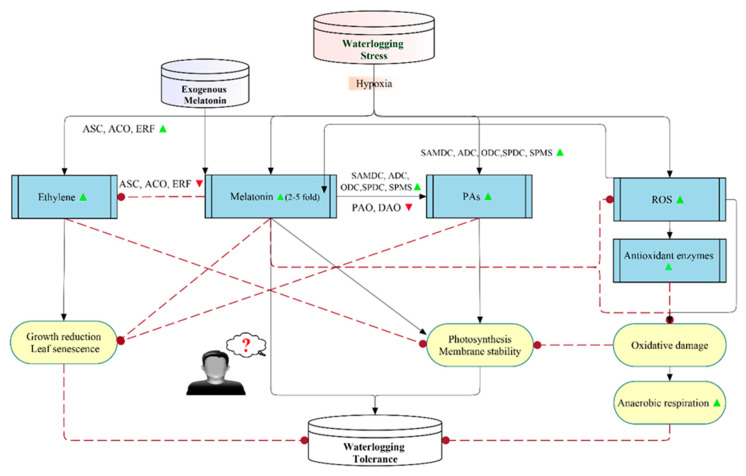Figure 3.
Schematic model explaining the protective mechanisms of melatonin in waterlogging tolerance. The solid arrows indicate stimulation, while the dashes indicate inhibition. ▲ and ▼ shapes indicate enhanced or decreased levels, respectively. Waterlogging induces ethylene, melatonin (2- to 5-fold), polyamines (PAs), and reactive oxygen species (ROS). Melatonin is also induced in response to ROS generation and exogenous melatonin. Melatonin stimulates PA biosynthesis, photosynthesis, and membrane stability, while it inhibits ethylene biosynthesis, growth reduction, leaf senescence, ROS, and oxidative damage. Excessive ROS causes oxidative damage leading to anaerobic respiration, which is scavenged by antioxidant enzymes. Additionally, growth reduction and leaf senescence are increased by ethylene, while they are decreased by PAs. Moreover, photosynthesis and membrane stability is enhanced by PAs, while they are reduced by ethylene induction and oxidative damage. The role of melatonin in waterlogging tolerance still needs further study. This figure is a combination of the two published mechanisms of Zheng et al. [118] and Zhang et al. [119], with some modifications.

